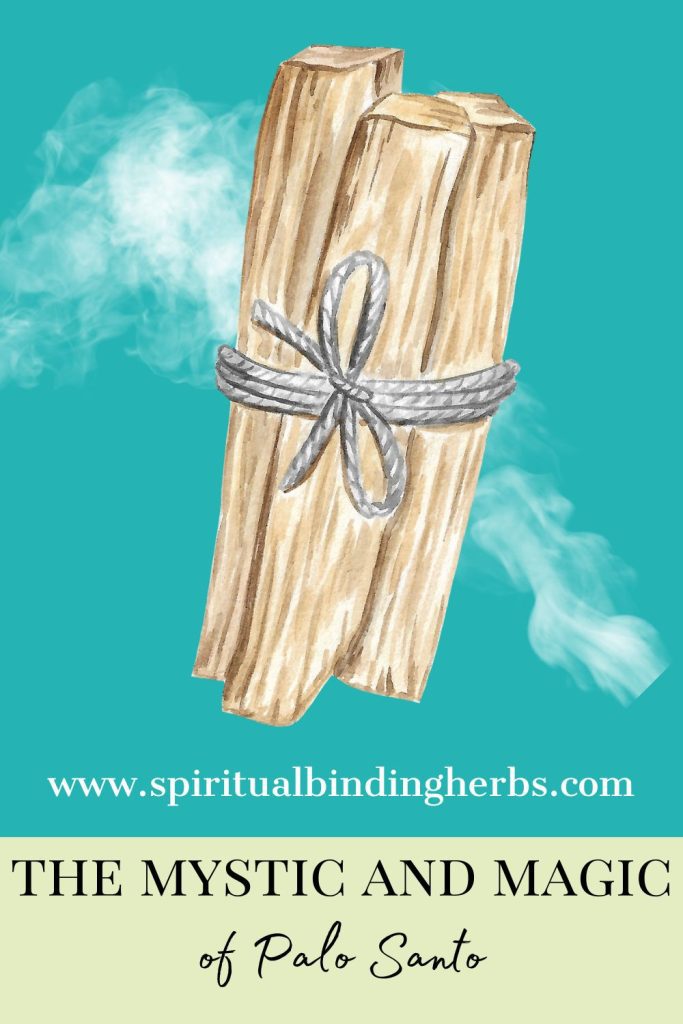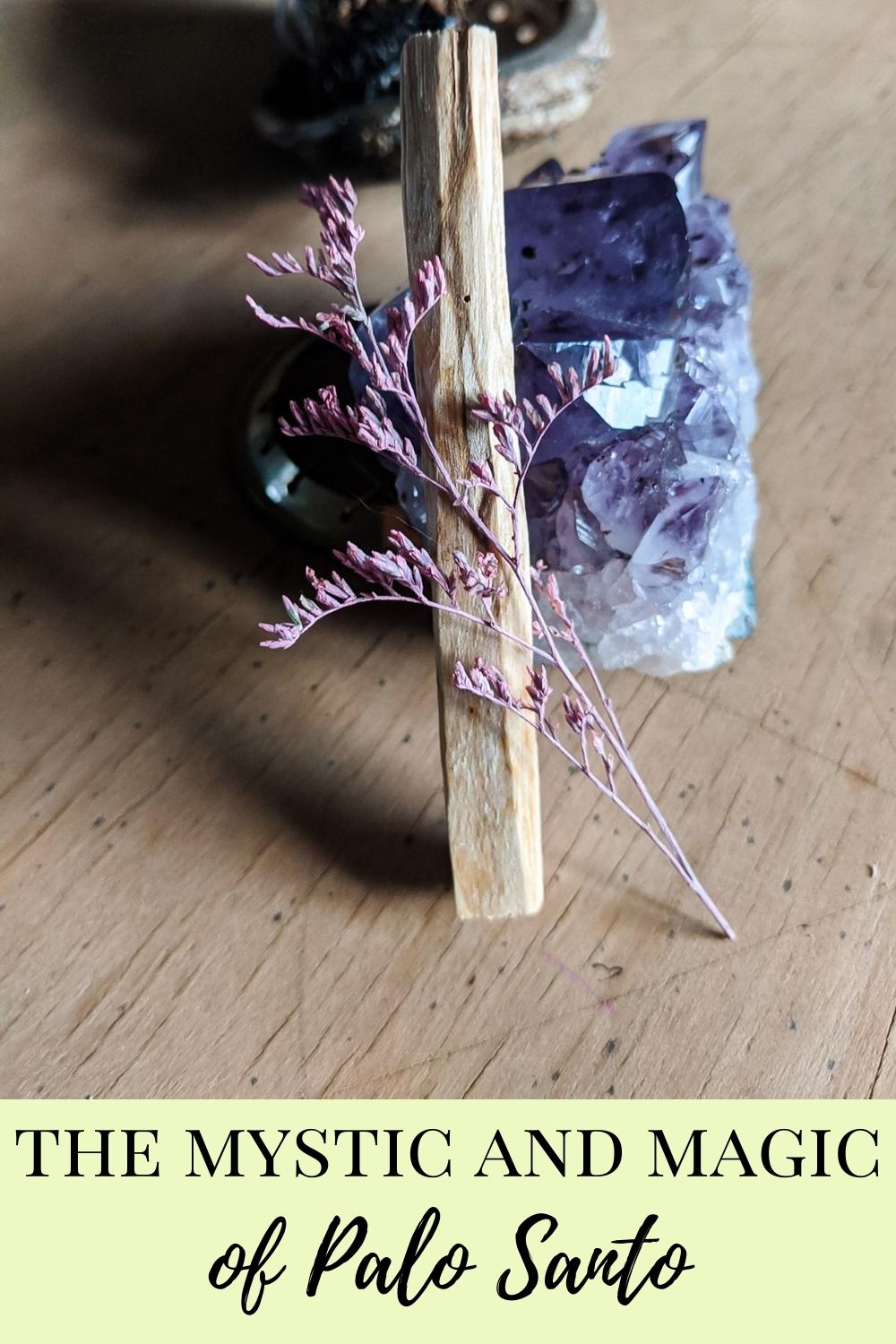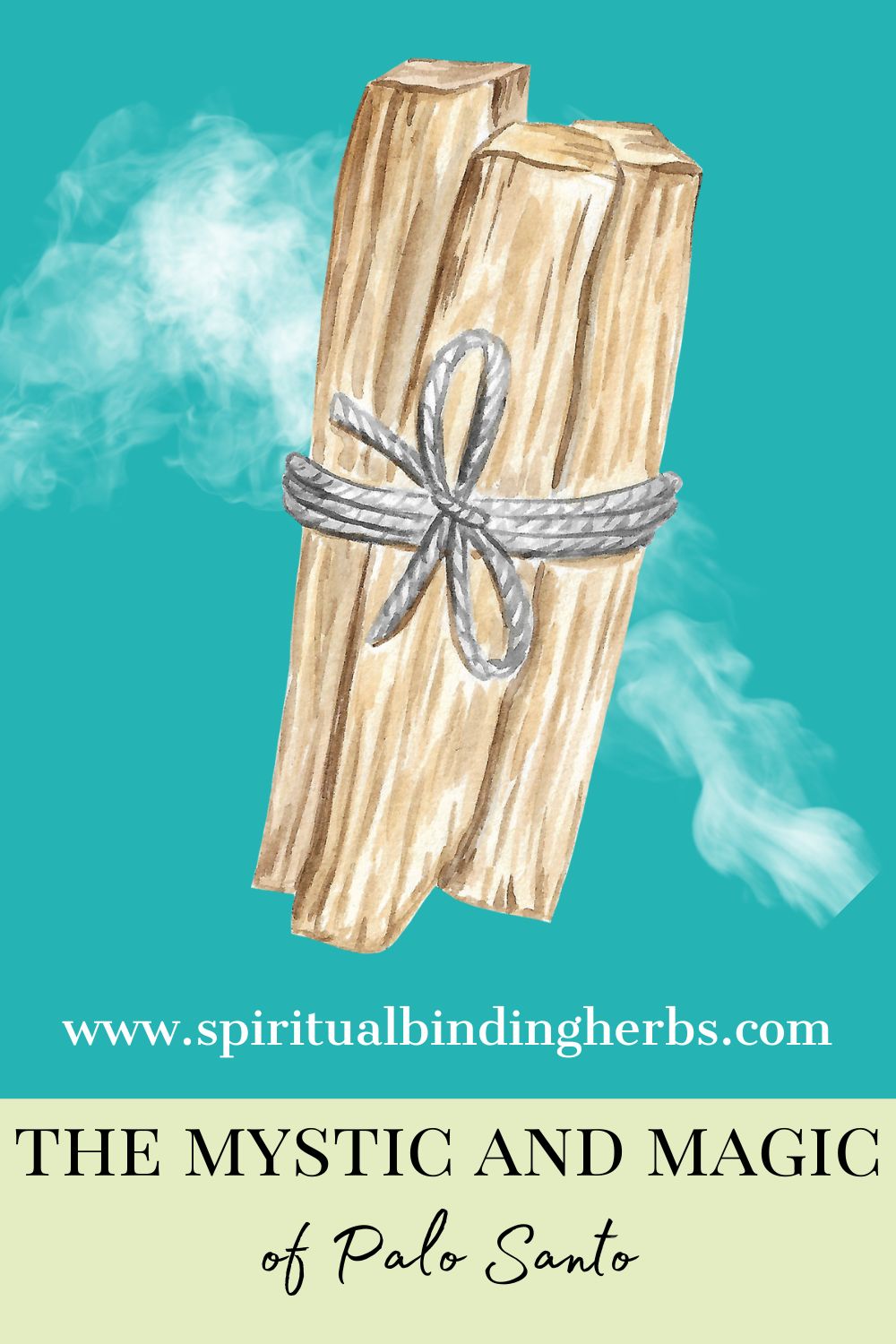
Palo Santo: The Mystic and Magic
The sweet smell of Palo Santo
Ah, the sweet yet almost peppery smell of Palo Santo…I recently bought my first burn stick after using sage for many years, and I instantly was intrigued. I wouldn’t say it has a less overpowering smell than incense or sage, just different (in a fabulous way 😉). It immediately takes your mind for a walk through a magical forest full of beautiful creatures, a sense of wonder, and a fresh start. So, what is the history behind this magical tree? What ancient traditions are you releasing when you smudge? What are the ethics behind harvesting its gifts? What is Palo Santo used for?
Palo Santo is undeniable and unforgettable

The smell of Palo Santo is undeniable and unforgettable once you have experienced its unique aroma. It’s hard to explain or pinpoint the scent exactly, but it instantly fills me with calm and a sense of connection. The use of this magical wood has been traced back centuries; indigenous people of South America have used it in sacred rituals and spiritual ceremonies. They have even found it the perfect insect repellent. Ah, nature, you magnificent being. I’m always in awe of the magical workings you provide 😊 So, where can the Palo Santo tree be found? Palo Santo can be found along the beautiful pacific coast of South America, stretching to Bolivia, Brazil, Costa Rica, Ecuador, Honduras, and Peru. The use of burning Palo Santo has a deep and long connection with the indigenous people of Peru, dating back to the Incan tribe, who view all trees but especially Palo Santo, as a sacred being.
Palo Santo was similarly used to how Native Americans used and still use white sage. As with sage, the belief behind burning it is to provide cleansing of your spiritual energy and the environment around you. Shamans burn Palo Santo during sacred rituals, ceremonies, prayer, and healing sessions. It is also believed to bring good fortune and helps one reconnect with a higher inner self when we may have fallen off the path or lost our way a bit. The smoke that is released is thought to have healing properties, both physically and mentally, by many and aid in ridding of negative energy. This may be why the translation of Palo Santo is Spanish for “Holy Wood or Holy Tree.”
The life cycle of the Palo Santo trees is amazing

Now the way in which these trees grow is simply amazing. People have found that there are, in fact, male and female trees. The male trees have been found to live the longest (up to 200 years! Females about 40-50 years), and the characteristics between males and females are a bit different. The males have more of a white color, are hollow, and are much more fragile than their female counterparts. The female trees have more of a yellow color and are denser. But back to how they are found growing, there usually is one male tree surrounded by eight female trees.
Nature is so magical
It is unbelievable how nature creates; I like to believe that the female trees form around the male to protect it as long as they can so it can magnify its healing and protective properties as if there is a spirit coming to life within each tree. The aromatic, distinct smell is only potent if the sticks are harvested from the deadwood. Harvesting from a live tree will not produce the same aroma. It is considered bad luck (and practice) since these trees are protected from overharvesting. Harvesting from old and wild-growing wood is where most believe the best quality comes from.
As shamans believe that plants all have a living spirit, burning Palo Santo must be used with respect and not mistreatment. This is why it can only be harvested from fallen trees, and one must wait to collect from a fallen tree. Harvesting takes place between 5-8 years after it has fallen. The reason behind waiting this long is the tree has to have time to let the oils mature, resulting in a quality and aromatic burn stick. There is a metamorphosis that happens over the years when the tree sits on the earth’s plane. The more time the tree has to rest, the more concentrated the oils will become.

The healing energy it emits has time to intensify. Once that tree has fallen, there will inevitably be branches that never touch the earth. These branches are said to have the highest energy and exceptional oil properties. These branches are exposed to more of the elements and dried by the sun, always living above the earth’s plane. Because of this, burning these particular sticks is thought to bring you even closer to your higher spiritual self. Since these are often limited, finding these top-quality Palo Santo sticks are few and far between. Snag them up if you happen to stumble across them! Now, those who decide to harvest unethically can discover that they got what they deserved. As a result of harvesting prematurely and not respecting the process, Palo Santo will produce wood without an aromatic scent and diminished healing properties, maybe even bringing bad luck.
Now the scent to some may not be so pleasant but give it some time! Shamans believe that if you are naturally drawn to the smell, your energy (emotional & spiritual state) is purified. If the scent doesn’t speak to you just yet, don’t worry, you aren’t doomed. Over time burning Palo Santo, the purifying effects will start to take place. One day you’ll finally find yourself not minding the smell; heck, you may even really enjoy it. Releasing the bad juju within or around you takes time to shift and lift off of us. Be patient and fully immerse yourself in the process. This is how we grow; from the moments of hardship and discomfort come complete contentment and confidence in who we are. The strength one gain from times of difficulty is quite remarkable and empowering.
What to look for when purchasing Palo Santo
So, what to look for when purchasing Palo Santo? Read the fine print (if there is any) and steer away from anything where “synthetic” is used. Since Palo Santo has gained popularity over the last few years, that means they’re also people out there who want to capitalize in any way necessary. When you take a look at the Palo Santo tree globally, it may not be declared endangered, but this could change based on what regional governments have for their population. The bulk of the species can be found in Ecuador.

It may be harder to come by from other regions, and the most ethical practices may not be in use, so take time to do some digging! I will always try to buy from smaller sellers instead of quickly grabbing something I see at a more massive retailer. Usually, these smaller sellers are very transparent about where their Palo Santo is from and how it is harvested. This transparency helps us all make better decisions and supports small businesses (win, win!).
But what is the spirit behind this magical tree? Well, this information is seeming challenging to find. I have yet to see any documentation that the spirit in the Palo Santo tree has a history. Is it just as simple as the shamans who first discovered this magical being believing that everything has a spirit? Or is it a long-lost story of an Inca god or goddess that somehow blessed these trees or left a part of itself in each seedling? Oh, how the mind can wander and create complex and intricate ideas. The possibilities behind this beloved spirit could be and maybe endless. I’ll keep searching, and I just know there is a magnificent story somewhere out there.
Sage is also another alternative if you prefer that smell a bit better.
Want to have a quick reminder of some of the fantastic things about Palo Santo? Download your info sheet here:
Wishing you love, light and inner peace babes ✌🌈✨💜
- Spiritual Cleansing with Plants: A Complete Guide
- Calendula Magical Properties: Unlocking the Ancient Secrets of the Golden Healer
- Healing Herbs of Early Spring: 5 Wild Medicinals to Forage Now
- Embracing the Blood Moon Magic: A Beginner’s Guide to Lunar Eclipses
- Dancing with the Moon: Harnessing Lunar Energy for Your Wellness Journey








42 Comments
Megan
I’ve never heard of Palo Santo before now. Very interesting!
Suz
I believe I’ve seen these trees in Mexico. Very mystical.
Angela
Neat info about the trees – males live to 200 and females maybe 50. Interesting.
Alice
Interesting.
Sabrina DeWalt
I need to look into this.
Emily
Interesting. I’ve never heard of it before even though I have traveled to some of those countries
Erika
I’ve never heard of this- sounds prettt amazing.
Rachel
This is so cool! And I love your quote about hardships 💕
Elaina
Thanks so much!
Leeandra
I’ve never heard of palo santo before, thanks for the information.
Barbara
Very cool information! How interesting!!
Cindy Mailhot
Thank you for the tip on synthetics…these can often be dangerous and definitely not like the real thing.
Michele
Very interesting. I have not heard of this before.
Sydney Delong
Very interesting! It’s cool how nature provides us with natural calming remedies!
Audrey
I’ve used it several times I love it. Extremely information post and the sheet of used to download. Thx
Alexis Farmer
I’ve heard of palo santo but don’t think I’ve ever smelled it before. I’m definitely intrigued! I love all the story behind it and am always interested in spiritual properties of plants.
Amy Irvin
Very interesting. Your blog is beautiful, and I love how extensive you are with your information 🙂
Elaina
Thanks so much!
Debbie
New to me! Haven’t heard of this before. Interesting.
Karie
Love aromatherapy stuff. Smells really can affect me. I haven’t heard of this one. Interesting.
Adrienne
This is new to me too but I really enjoyed reading about Palo Santo. Thanks for sharing your experience, I’d love to try it out!
Bonnie
I had no idea that there could be male and female trees. Very interesting.
Kristin
I appreciate the healing properties of plants and enjoy learning about what each plant/tree “brings to the table,” so to speak.
Linda Egeler
Very interesting post. I have never heard of Palo Santo, but you have me intrigued.
Alyssa
Interesting, I never heard of this but sounds like it smells nice.
Kendra
Wow! I loved learning about Palo Santo and how it is grown and harvested.
Lisa
Woah, never heard of this before. I will have to show this to my husband. He would be interested in this too!
Chelsea
I love the smell of sage but I wonder if I’ve ever smelled palo santo… I’m totally going to check it out now! Thanks for the tip!
Sandi Barrett
So interesting, I had never heard of Palo Santo before. Thanks for the enlightenment!
Lisa Manderino
I hadn’t heard of this before but now I want to smell to see if I like it!
Ashley Pacheco
I’ve never heard of this before. I liked the backstory behind it.
Sandra Barrett
So cool, I have never heard of Palo Santo before.
Melissa Christensen
I haven’t heard of Palo Santo before; thank you for enlightening me! The way the trees grow is fascinating!
Sandra Whitmore
I’ve never heard of this. Interesting.
Tiffany Smith
Thanks for the tips on what to look for! Can’t wait to try it…love natural remedies
Amanda
I’ve never heard of Palo Santo. Very interesting.
Suzan | It's My Sustainable Life
Need to give this a whirl! Thank you for the information!!
Angela
This was a neat thing to learn about and a unique travel diary.
Melissa Jones
What a neat idea. I’ve never heard of this before.
Cynthia Mailhot
i have to wonder how the species survives with such a discrepancy in in tree ages.
Cindy Moore
I haven’t heard of this tree and now I want to smell it. Great info.
Barbara
This is very interesting! I’ve never heard of this before!